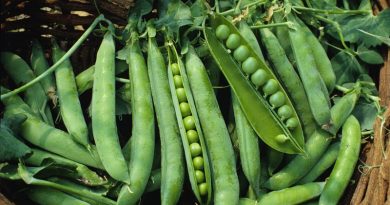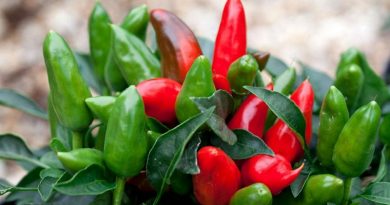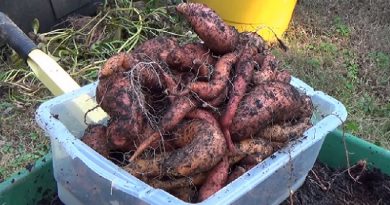Grow Your Own Squash
Grow Your Own Squash
Squash come in all kinds of shapes and sizes from massive pumpkins to tiny patty pan squashes. There are winter squashes, such as pumpkins and butternut squash and summer squashes, such as yellow crookneck, yellow straightneck, and scallop, which are harvested when immature.
They are all relatively easy to grow from seed.

Sow Grow Harvest Varieties Problems Recipes
Squashes are easy to grow from seed and can be sown outdoors in the spot where they are to grow, or you can start them off indoors in pots.
Sow two or three seeds 2.5cm (1in) deep outdoors in late May or early June and cover with cloches, jars or plastic; leave in place for two weeks, or as long as possible, after germination. Thin the seedlings to leave the strongest one.
For earlier crops or in cold regions sow seeds indoors on their side, 13mm (½in) deep in 7.5cm (3in) pots of compost from mid- to late April at 18-21ºC (65-70ºF).
If you don’t have the space to raise squash seedlings, you can also buy young plants from garden centres in spring and these usually can be planted outdoors straight away. Check specific plant information.
Grow

Two weeks before planting or sowing seed outdoors, make planting pockets 90cm (3ft) apart for bush plants of summer squashes and 1.5m (5ft) for trailing plants of summer squashes.
Do this by making a hole about a spade’s depth, width and height and fill with a mixture of compost or well-rotted manure and soil. Sprinkle a general fertiliser over the soil. Plant one plant on top of each planting pocket.
For indoor-raised seedlings, plant outside on top of your planting pocket in early June, hardening off (acclimatising) before doing so. Do this by moving them into a coldframe for a week or, if you don’t have a coldframe, move plants outdoors during the day, then bring in at night for a week. The following week leave them out in a sheltered spot all day and night.
You can also grow summer squashes in growbags or containers at least 45cm (18in) wide. Plant one or two per growbag, or one per container.
Keep the soil constantly moist by watering around the plants, not over them. As they need plenty of water, sink a 15cm (6in) pot alongside the plants when planting out. Water into this and it will help ensure the water goes right down to the roots and does not sit around the neck of the plant, which can lead to rotting.

Feed every 10-14 days with a high potash liquid fertiliser once the first fruits start to swell.
The fruit of pumpkins should be supported off the soil on a piece of tile or glass.
Common problems
Powdery Mildew
Powdery Mildew: Appears as a white powdery deposit over the leaf surface and leaves become stunted and shrivel.
Remedy: Keep the soil moist and grow in cooler locations.
More info on Powdery Mildew
No fruit, or fruit rotting when very small: This is a physiological problem, caused by the growing conditions, not a pest or disease. It is a problem when the weather in early summer is cool and this causes inadequate pollination.
Remedy: This is usually a temporary problem and once the weather starts to improve, so will pollination. You can try to hand-pollinate plants yourself by removing a male flower (no swelling at their base) and brushing the central parts against the centre of a female flower (female flowers have a swelling at the base – this is the beginning of the fruit). But this is a bit of a hassle, and normally the plant will correct this problem itself.
More info on No fruit, or fruit rotting when very small
Grey mould
Grey mould: Can be a problem in densely sown crops, especially ‘cut and come again’ veg crops. Seedlings suddenly collapse. This is a problem normally in wet conditions, and is usually worse on weak or damaged plants. The mould usually enters through a wound but, under the right conditions, even healthy plants will be infected. You will see fuzzy grey mould on affected buds, leaves, flowers or fruit. Infected plant parts eventually shrivel and die.
Remedy: Sow thinly and when conditions are warm. Hygiene is very important in preventing the spread of grey mould. If you see it, remove the infected material and destroy. Grey mould is encouraged by overcrowding, so make sure you plant your seedlings, plants and squashes at the appropriate distance apart.
More info on Grey mould
Harvesting
Harvest summer squashes when the fruit is still quite small. For winter squashes for overwintering, let the fruit mature on the plant and remove before the first frost strikes.
Recipes
Masterchef’s Gregg Wallace uses a pumpkin as a bowl for a delicious Squash fondue – great for parties.
Varieties

‘Crown Prince’:(Winter squash) A recognisable trailing squash with blue skin, orange flesh and a sweet, nutty flavour. Yields are good and it stores well over winter.
‘Cobnut’ AGM:(Winter squash) An early ripening butternut variety. It has large, ridged fruits with a small seed cavity. Ideal for roasting or making soups.
‘Sunburst’ F1:(Summer squash) This bright yellow squash has a nutty flavour and a scalloped shape, and is best harvested when it is about 5-6cm in diameter. Grow and treat as you would a courgette.
‘Peter Pan’ AGM:(Summer squash) A uniform crop of light green, scallop-shaped fruits which should be harvested when small.
‘Jemmer’ AGM:(Summer squash) A hybrid offering good yield of bright, light yellow cylindrical fruits. Vigorous, healthy, upright plants with fruits that are easy to see and pick; also recommended as a courgette.
Baby Bear:(Summer squash) Flattened orange fruit and very tasty seeds.
‘Eight Ball’ AGM:(Summer squash) A good yield of round, green fruits; easy to see and pick from the compact, upright plants.
‘Clarion’ AGM:(Summer squash) Healthy plants produce a high yield of attractive cylindrical fruits that are a mottled light green. Useful for stuffing if left to grow bigger.
Source:https://www.rhs.org.uk/advice/grow-your-own/vegetables/squash
You might also like:
==>Covering Potato Plants: How To Hill Up Potato Plants
==>Sweet Potato Rotting After Harvest – What Causes Sweet Potato Storage Rots


